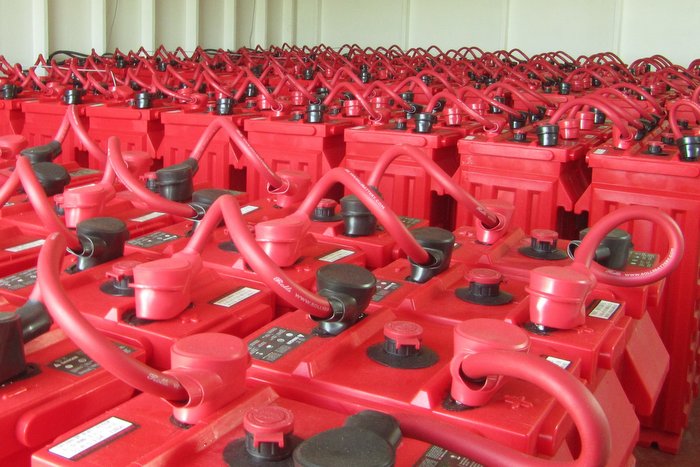Three steps to properly size battery-based off-grid systems

For optimal performance, and to prolong the life of your batteries and other components, an off-grid renewable energy system must be properly sized. Improper system sizing may result in a variety of issues including over/undercharge and premature capacity loss or battery failure. When a system is improperly sized, the battery bank will typically be the first point of failure. Heavily discharging a battery bank that is sized too small will overdischarge and shorten the cycle life. Oversizing the battery bank will also cause problems as the batteries must be adequately discharged and charged or “exercised” to maintain their performance.
When completed in the proper order, this three-step process is used to help installers and DIY homeowners size, design and install an off-grid system that will provide adequate energy storage and charging capability to last for many years.
Step 1: Perform an energy audit
Before selecting and purchasing any of the system components, an energy audit should be completed to determine the system is properly sized. An energy audit includes an inventory and tally of energy draws, including any appliances, lighting and electronics, etc. Although this may seem a bit tedious, taking the time to complete this step will ensure your system is properly sized and eliminate the need for unexpected and costly upgrades or changes.
By calculating an estimated amount of energy required to operate the home over a 24-hour period, the batteries and system components can then be designed and selected to produce the necessary energy storage and charging capability. Factoring in the average daily use and considering any short-term changes in energy consumption will help to calculate an estimated daily rate in kWh which is closely in line with your actual usage. This total may then be converted to amp-hours to select an ideal deep cycle lead-acid battery.
Step 2: Size the energy storage
The second step is to select a battery model that will meet the required energy storage capacity. Flooded deep cycle lead-acid batteries are available in a wide range of voltage and capacity options and offer the lowest cost/kWh. The 20-Hr AH rating of the battery is used when sizing a renewable energy system.
Off-grid systems are typically set up in 12V, 24V or 48V configurations. The selected batteries may be connected in series and or parallel to meet the required voltage. Connection in series increases the voltage of the battery bank. Connecting multiple series strings in parallel is done to increase total storage capacity. For best performance, and to minimize any required maintenance, a battery bank should be sized within 15 percent of the audited storage requirement using as few batteries and series strings as possible. Exceeding three parallel strings is not recommended as this will increase the number of terminal connections and likelihood of charge imbalance.
Deep cycle lead-acid battery banks typically operate between 20 and 50 percent depth of discharge (DOD) for off-grid applications as this offers a balance between capacity and cycle life, taking into consideration the long-term cost of replacement. Systems are generally sized to provide 1-2 days of autonomy. This will support the average daily draw for a few days in conditions where poor weather, such as overcast conditions, may reduce charge output.
For efficient operation, the batteries should reach full state-of-charge using the PV charge source as often as possible. Charge times for solar applications are limited to daylight hours and vary with weather conditions as this affects charge output. As the system efficiency and charge output may vary considerably by season, the battery bank and charge source(s) should be designed and sized for average operating conditions in the region, rather than a best-case scenario.
Step 3: Size the charge source

The final step is selecting system components, including the PV modules, inverters and charge controllers.
The recommended charge current for flooded deep cycle lead-acid batteries is 10 percent of the 20 Hr Amp-Hour or C/20 rate of the battery bank. As an example, if the battery bank is 500 AH total, the output from the charge source should reach 50A during peak charge times (4-5 hours mid-day) to ensure the batteries reach full state-of-charge. Charge output must increase with the Amp-Hour capacity of the battery bank. When battery capacity is insufficient to support an increase in usage, an additional parallel string of batteries or larger battery bank may be installed. In this case, the charge source may also require an increase in size to support the required charge current. Additional PV modules may be required to increase the charge current. Be sure the inverters and charge controllers will support a higher Amp output as well.
For backup, an alternative charge source, such as a generator, may be necessary to ensure the batteries reach full state-of-charge. The generator should be sized to provide the proper charge voltage and adequate charge current for the size of the battery bank.
The most common mistake with system sizing is insufficient charge sources. Over time, undercharging will result in sulfation build-up and capacity loss. Although adjustments in charging parameters and troubleshooting steps may be used to reverse the effects of repeated undercharge, the life of the battery bank is likely to be shortened when this occurs.
Following these steps in the proper order will reduce the risk of system outages, costly repairs and/or replacements. Rolls recommends consulting with a board-certified PV Installer for assistance with system design and installation.
Jeff Myles is marketing manager of Rolls Battery.





Comments are closed here.